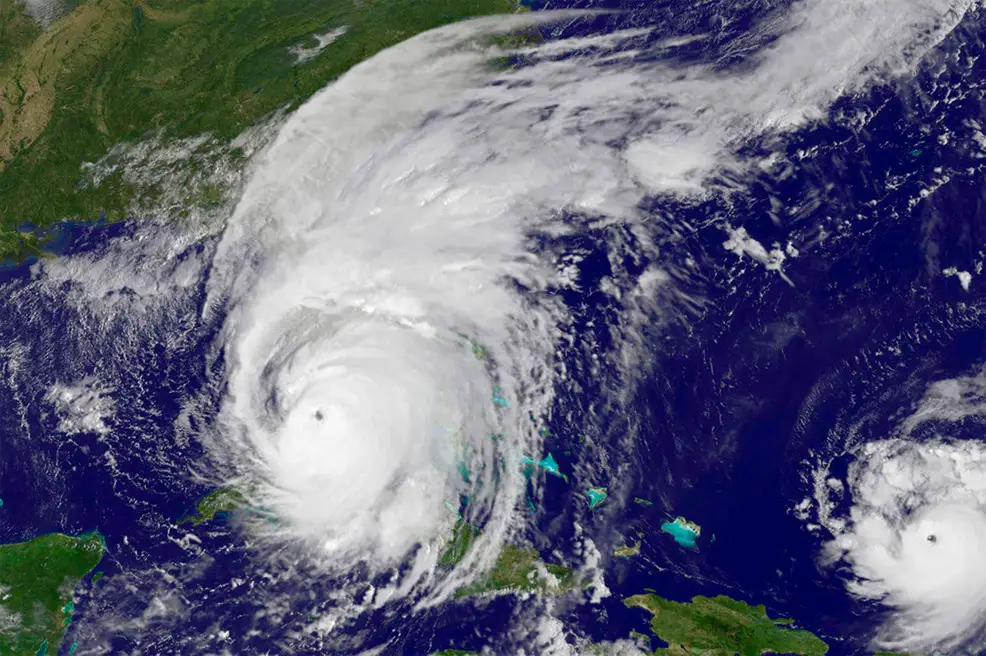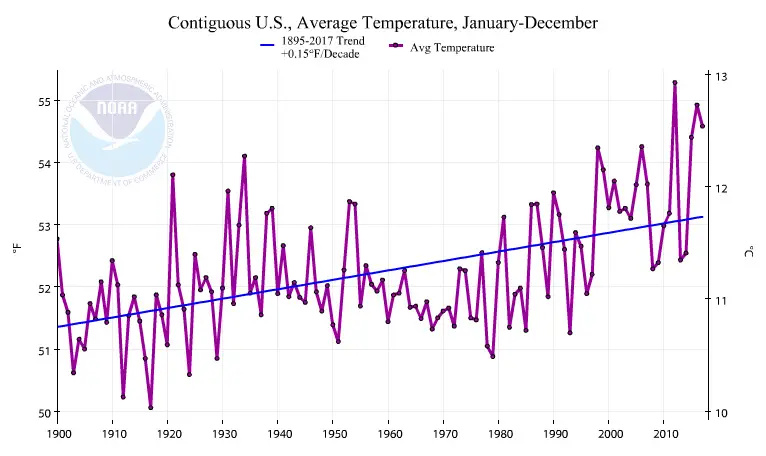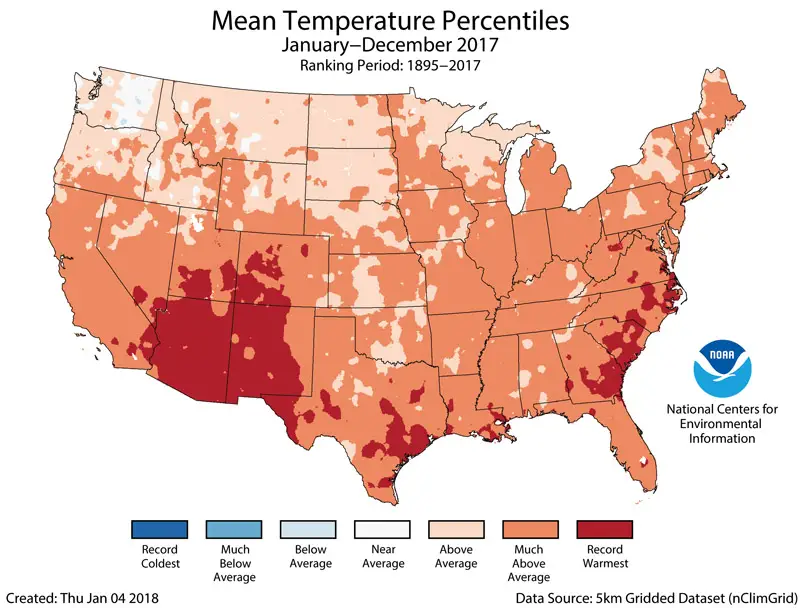
11th January 2018 Record year for climate and weather-related disasters in the U.S. The National Oceanic and Atmospheric Administration (NOAA) reports that 2017 was the costliest year on record for climate and weather-related disasters in the United States.
The overall cost of climate and weather-related disasters in the U.S. reached $306.2bn last year – smashing the previous record of $214.8bn set in 2005 – according to a new assessment by NOAA. A total of 16 separate events in 2017 each surpassed $1 billion in damage. This included three major hurricanes (Harvey, Irma and Maria), eight severe storms, two floods, a wildfire, a drought and a freeze. Losses from Hurricane Harvey exceeded $125bn, second only to Hurricane Katrina, the costliest storm on record. Hurricanes Maria and Irma had total damages of $90bn and $50bn, respectively. Meanwhile, a huge wildfire affecting multiple areas in the western U.S. caused damages tallying $18 billion, triple the previous record. 2017 was also the third warmest year (after 2012 and 2016) in 123 years of record-keeping in the U.S. The average temperature was 12.4°C (54.6°F), making it 1.5°C (2.7°F) above the 1950-1980 baseline period. The five warmest years on record for the U.S. have now all occurred since 2006. It was also the 21st consecutive year that the average temperature was higher than normal. For the third consecutive year, every state across the contiguous U.S. and Alaska experienced above-average annual temperatures.
"In the general picture, the warming [of the] U.S. over the long term is related to the larger-scale warming we have seen on the global scale," explains the chief of NOAA's monitoring section, Deke Arndt. "The U.S. will have a lot more year-to-year variability, so that it bounces up and down depending on prevailing weather regimes. But the long-term signal is tied with long-term warming." The recent period of extreme cold gripping parts of the country has led some – including President Trump – to question the impact of global warming. However, NOAA scientists are keen to point out that when looking at the country as a whole, over the course of an entire year, it was very warm. "We do live in a warming world, but we still have very cold poles and we still have the same weather systems that pull cold air away from those poles and down to where we live," said Arndt. "We are still going to see blue blobs on the map, but when they average out with the pinks and red that we see over the course of the year, we end up seeing a pretty warm year." As shown below, five states – Arizona, Georgia, New Mexico, North Carolina and South Carolina – had their warmest year on record, with "above average" or "much above average" temperatures for the rest. Meanwhile, average annual precipitation for the contiguous U.S. was 32.2 inches, or around 2.3 inches above the long-term average. This made 2017 the fifth year in a row with above-average precipitation. Extreme rainfall has been linked to global warming, with a 7% rise in rainfall intensity expected for each degree of additional warming.
So, if these climate trends continue, what sort of impacts might we expect in the future? According to one study, published by Stanford University, extreme heatwaves are likely to be commonplace in the U.S. by the late 2030s. This will have serious impacts on agricultural yields and human health, especially in the American West. From 2030 to 2039, most parts of Arizona, Colorado, New Mexico and Utah will have at least seven summers equal to the hottest season ever recorded between 1951 and 1999. The hottest daily temperatures of the year from 1980 to 1999 will become twice as frequent. Persistent, drier conditions will be felt around the country, with reductions in soil moisture and an accompanying rise in wildfires. By the 2040s, the arid conditions in the west will have continued to worsen. They will be spreading to southeastern states, where soybean production is predicted to be slashed by half, with a similar yield decrease for sorghum. Meanwhile, invasive species of insects will have migrated to new latitudes – driven by the increasing temperatures. Bark beetles, for example, will move north and kill off huge areas of forest. By the end of the decade, the effects of heat stress on labour capacity will have doubled, affecting those who work outside and increasing the risk of heat stroke, heat exhaustion, heat cramps and other conditions leading to accidents and injuries. Many sports and leisure activities may be abandoned in summer due to excess heat and humidity. By the 2050s, much of America's coastline will be feeling the effects of rising sea levels, which may have increased by half a metre or more. Florida is expected to be particularly hard hit by flooding disasters and storm surges, unless adequate preparations are made. Likewise, the rest of the Gulf Coast along with much of Chesapeake Bay (the largest estuary in the country) will be facing a crisis. Under one scenario, up to 15 million Americans may qualify as "displaced persons" by the 2050s. A surge in migration to Canada may occur, perhaps leading to that country becoming a new and emerging superpower in the late 21st century.
Comments »
If you enjoyed this article, please consider sharing it:
|









